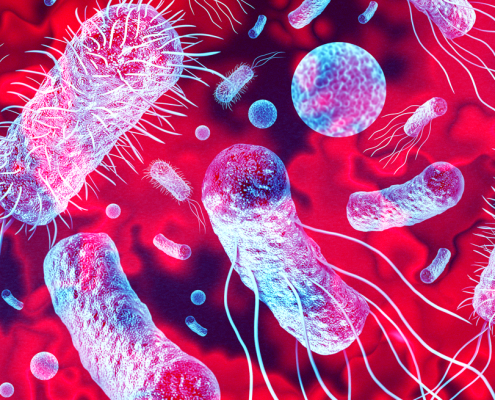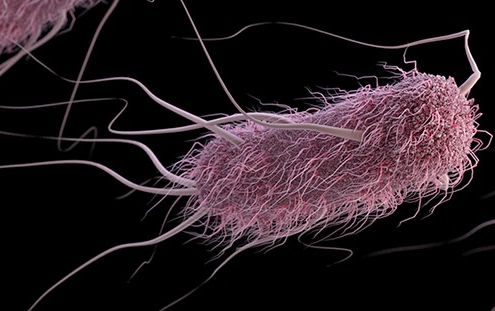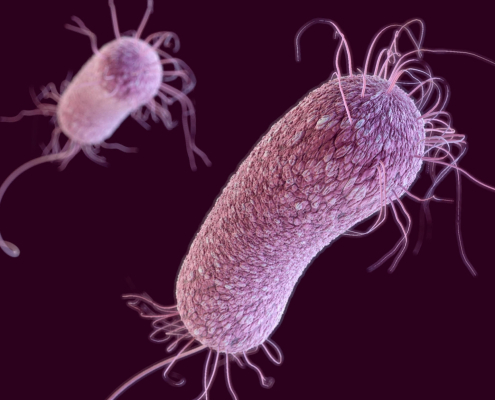Candida Albicans
It is a type of yeast that reproduces sexually and causes opportunistic oral and vaginal infections in humans. Although there are approximately 200 species in the Candida genus, C. albicans is responsible for 75% of Candida infections.
The overgrowth of Candida fungus in the intestines can lead to gas, bloating, abdominal cramps, pain, constipation/diarrhea, and a weakened immune system. C. albicans is one of the microorganisms that live in the human oral cavity and digestive system. It can be found in the mouths of 40% of adults and in the vaginas of 25% of women. Therefore, there is also a risk of sexual transmission.
Aspergillus Brasiliensis
It is a type of fungus that produces black conidia (spores) that can easily disperse into the environment. A. brasiliensis belongs to the genus Aspergillus. Approximately 180 Aspergillus species have been identified, and fewer than 40 of them cause infections in humans.
Certain lung diseases, such as aspergilloma, emphysema, tuberculosis, or advanced sarcoidosis, can lead to the formation of cavities in the lungs. Fungal spores can enter the body through contact, cuts, wounds, or the respiratory tract. The infection, which can also settle in the sinuses, may also damage the lungs and brain.
Staphylococcus Aureus
Staphylococcus aureus or S. epidermidis can lead to staphylococcal meningitis, an infection of the membranes covering the brain and spinal cord, usually as a complication of infections transmitted through surgical procedures or the bloodstream.
Although there are approximately 20 species, the most common human pathogen is S. aureus. S. aureus is transmitted from person to person; it spreads easily, particularly via the hands of infected individuals, wounds on their skin, or through nasal carriage. It is an opportunistic pathogen that can cause vaginal dysbiosis, aerobic vaginitis, and life-threatening menstrual toxic shock syndrome. It is also associated with many serious health problems, ranging from skin infections to lung and heart infections.
Escherichia coli (E. coli)
It is a type of bacteria that normally lives in the intestines of humans and animals. However, some strains can cause severe diarrhea and stomach cramps; sometimes this condition is also accompanied by vomiting and fever.
E. coli, as part of the normal bacterial flora, can be present in the genital and anal area. It can be transmitted to the urinary tract or vaginal area during sexual intercourse, causing infection. It can lead to many clinical conditions such as enteritis, urinary tract infections, septicemia, and neonatal meningitis. However, increasing antibiotic resistance is making treatment more difficult.
Streptococcus Uberis
Streptococci are a group of bacteria that cause various diseases in humans and animals. S. uberis is primarily significant in terms of livestock. Its natural habitat includes soil, manure, vegetation, and the skin, vagina, and tonsillar region of animals. It can be transmitted both from host to host and from the environment.
It is a major causative agent of mastitis in cows. It is transmitted to the teat during milking through contact with bedding material, enters through the teat canal, and multiplies in the udder tissue. This situation leads to inflammation, an increase in the somatic cell count (SCC) in the milk, and a decline in milk quality. Consequently, lactation is impaired, milk yield decreases, and the infection spreads easily within the herd.
Bovine Enterovirus (BEV)
It is a virus that is generally mild but highly contagious in cattle. This RNA virus, belonging to the Picornaviridae family, is highly resistant in the environment and spreads through feces, contaminated feed, water, or equipment. The virus, shed in the feces of infected animals, can be transmitted to other animals through the fecal-oral route.
BEV infections are often subclinical; however, in some cases, diarrhea, fever, anorexia, and, rarely, respiratory symptoms may occur. In animals with weakened immune systems or under stress, the infection may be more pronounced. In calves, in particular, it may present with mild respiratory and gastrointestinal symptoms. Because the virus can spread rapidly within a herd, hygiene measures and environmental disinfection are crucial.





